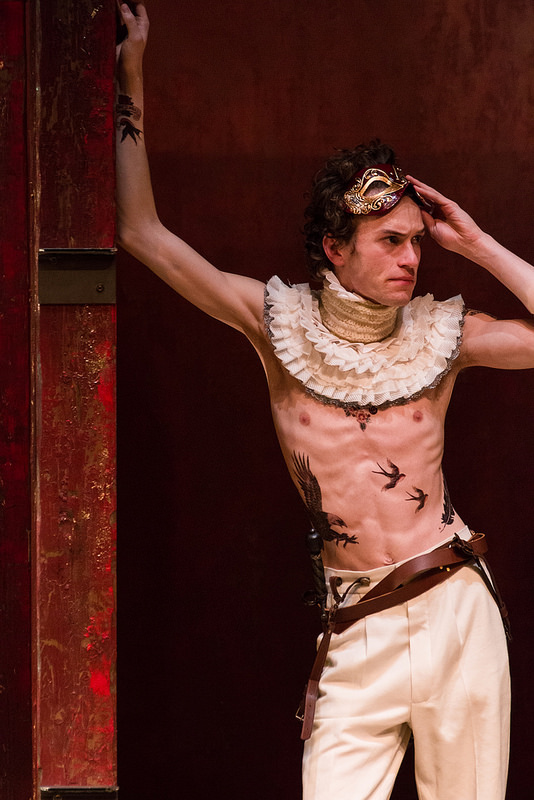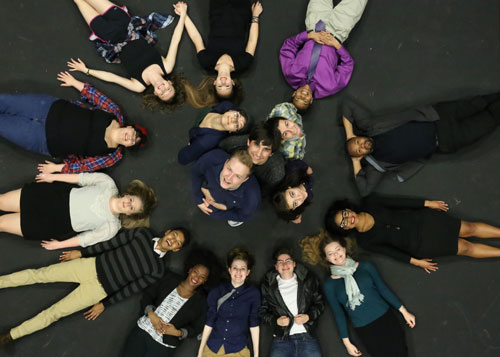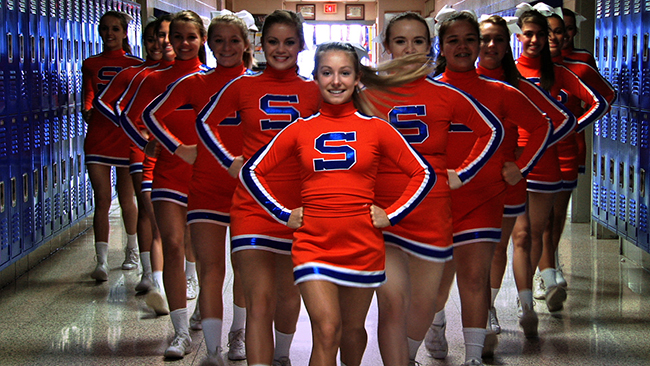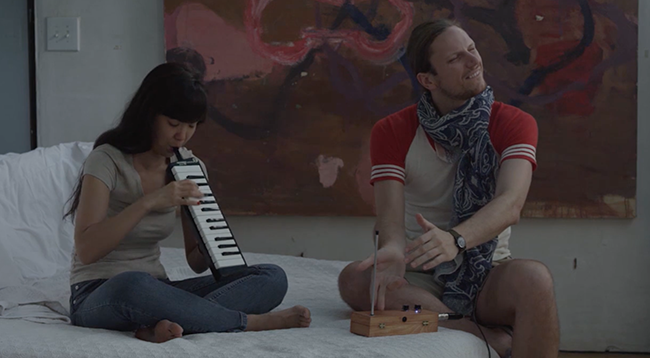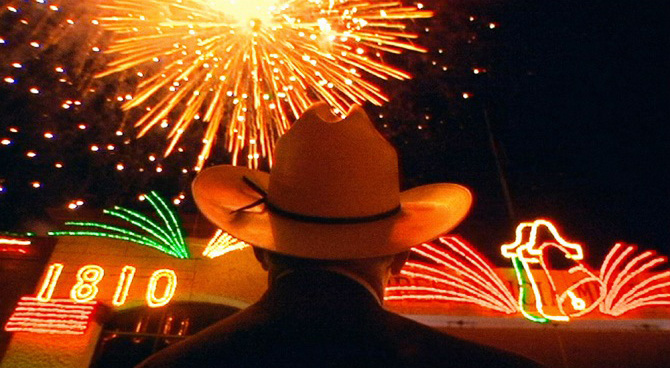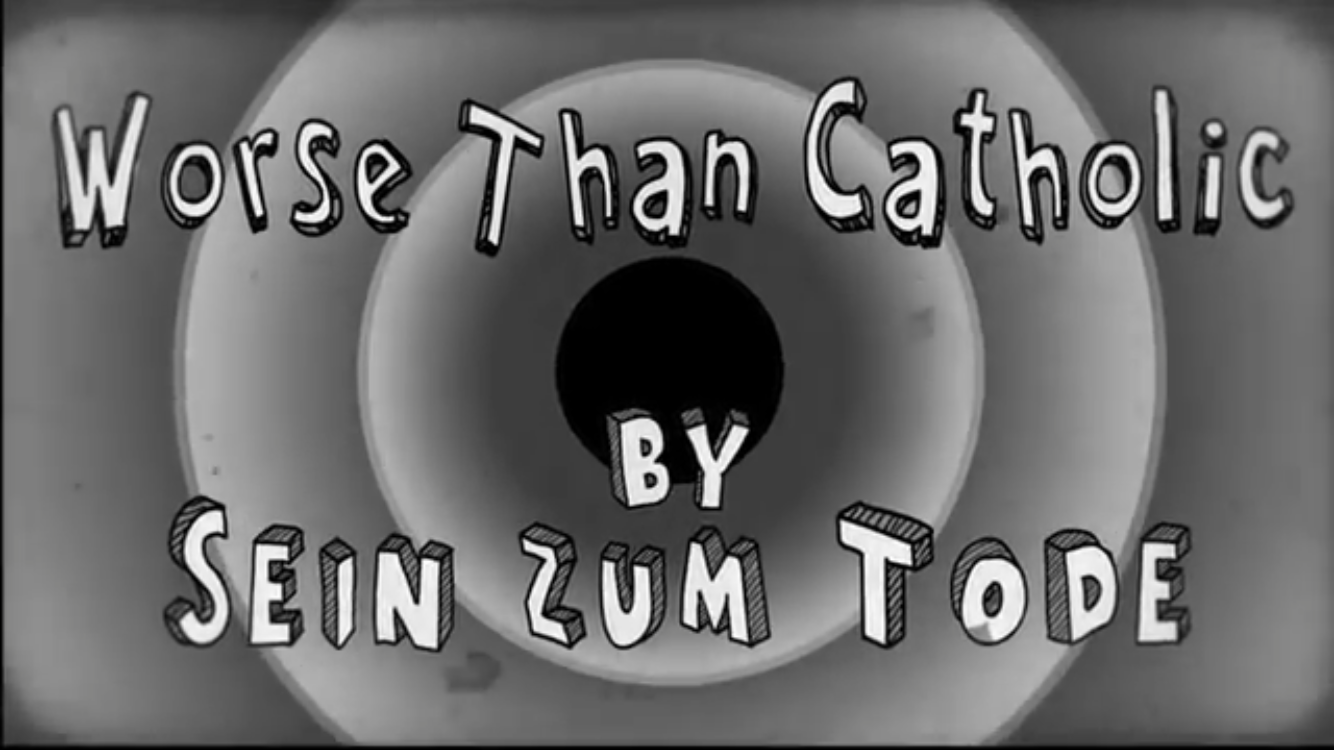 By: Michael Spawn
Sein Zum Tode’s music is not for the faint of heart. The Columbia trio (Jon Scott—guitar, David Scott—drums, Jamie Clark—bass) is one of the most interesting and aurally challenging bands in the city, and likely the whole Southeast. You’ll typically find them on a bill of metal acts, but to reduce Sein Zum Tode to that genre is something of a cop-out. The sheer mathematical and virtuosic intricacies in every song put them in a class truly all their own. In preparation for their upcoming EP, “Siamese Second Cousins Never Removed,” which will see its official release this Friday at New Brookland Tavern, Jasper spoke with bassist and video director Jamie Clark about his video for “Worse Than Catholic,” an animated fever dream that plays like an old Warner Brothers cartoon set in purgatory and can be viewed below.
By: Michael Spawn
Sein Zum Tode’s music is not for the faint of heart. The Columbia trio (Jon Scott—guitar, David Scott—drums, Jamie Clark—bass) is one of the most interesting and aurally challenging bands in the city, and likely the whole Southeast. You’ll typically find them on a bill of metal acts, but to reduce Sein Zum Tode to that genre is something of a cop-out. The sheer mathematical and virtuosic intricacies in every song put them in a class truly all their own. In preparation for their upcoming EP, “Siamese Second Cousins Never Removed,” which will see its official release this Friday at New Brookland Tavern, Jasper spoke with bassist and video director Jamie Clark about his video for “Worse Than Catholic,” an animated fever dream that plays like an old Warner Brothers cartoon set in purgatory and can be viewed below.
Jasper: What is your history with Sein Zum Tode?
Jamie Clark: I actually play bass guitar in Sein Zum Tode. I’ve been playing with them since about 2005. Jon and David handle the majority of songwriting. This allows a level of separation between my videos and their ideas, which I think leads to some interesting interpretations.
J: When and how did you become interested in directing videos?
JC: I’ve been working with multimedia in one form or another since the mid-‘90s. Back then—editing footage of animals to Pantera’s “Fucking Hostile” for a high school biology assignment—the process to get something from the computer to the television was painstaking and expensive. Once I was reintroduced to digital media in college—around 2001—I was amazed at how simplified it had become. I instantly started writing short films and coming up with video projects, which is something I’ve kept up with off and on ever since. Being part of the music scene meant I had an unlimited supply of friends who would love videos. Taking on music videos always seemed like a fun break from filmmaking because their short in length, a lot of your pacing decisions are already made for you, and you don’t have to record on-set audio.
J: What was the original concept for the “Worse Than Catholic” video and how close to that concept is the finished product?
JC: Something that I hear a lot about Sein Zum Tode is the music sounds completely random and chaotic. Since I’ve actually had to write out all of these parts and learn them on bass, I know there’s a very deep, intricate structure to the songs. My goal was to come up with a concept that articulated that structure. Making it animated allowed us to go as crazy as we wanted to go. I had been inspired by shows like Superjail! on Cartoon Network that feature incredibly long and detailed animated chase scenes where things are happening and scenes change so quickly you often have to go back and rewatch. My writing partner and I sat down with a spreadsheet of all the different parts of the song and talked about how we could start tying them all together into a single narrative. To that end, I think the finished product is exactly what we set out to create.
J: Who is your writing partner?
JC: Russell Sanders, the star of the video. I met him when he was studying acting at USC back in 2005 and we’ve co-produced just about everything I’ve worked on since. I handle most of the directing and he handles most of the acting, but we’re both equally active in getting projects to completion. He ran camera on the last video we did for Sein Zum Tode , “Mansteam,” when I had to be on camera.
J: What program did you use to make the animation?
JC: For this project I worked almost exclusively in Adobe After Effects, with a bit of help from Photoshop. Jon and David both have a history of drawing weirdo creatures, so I asked them to draw me as many as they could. I got stacks and stacks of pages, which I then scanned into the computer. Then in After Effects you build something that kind of looks like a paper doll—a creature with an individual head, body, arms, legs, etc. Handling the animation in After Effects means you have to do every little frame-by-frame animation, and much more animation by math. “On frame one have the bat be on this side of the room, and by frame 115 have him on this side,” and the computer fills in the rest. The scene where he’s riding on the mine cart actually almost destroyed (trying to think of a word other than “derailed” to avoid puns) the entire project. When it came time to actually render the video, After Effects was giving me the error, “Sorry, this background is too large.” I didn’t know how to fix is short of starting over again, so I put the project aside for a number of months while I hid under my bed. Once I finally got over my fear and looked into it, it was a pretty simple fix and we were back on track. Even with the fix, it took about 48 hours to render the video every time. There’s nothing worse than not using your computer for two days, finally having a copy of the finished product, and finding an error in the first two seconds.
https://www.youtube.com/watch?v=U0N7qfRAgAs

